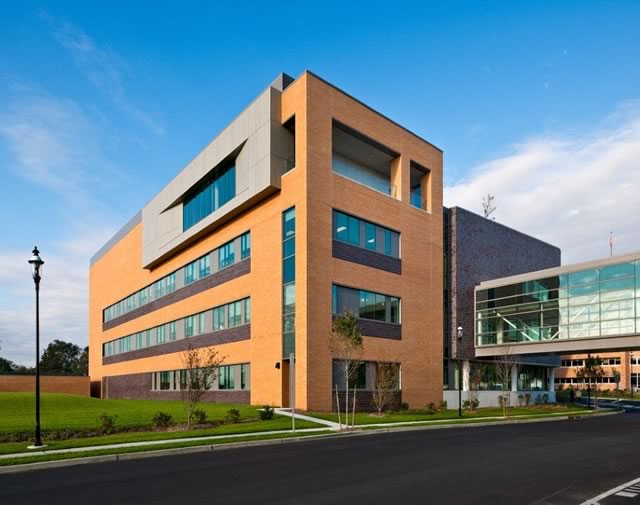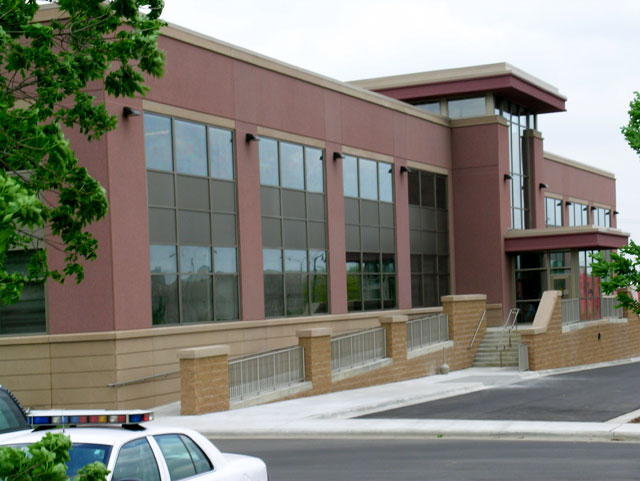Bulletproof Panels: Strengthening Safety in Commercial Spaces

Public safety has become an increasingly important consideration for building owners, especially with the uptick in gun violence in recent years. A study done by the National Institute of Justice found that the number of mass shootings continues to climb, with Pew Research reporting that “more Americans died of gun-related injuries in 2021 than in any other year on record.”
With these sobering statistics in mind, architects need to consider integrating bulletproof or bullet-resistant materials into their buildings. To support these efforts, Mapes and other manufacturers work to create bullet-resistant infill panels that architects can use to increase building and occupant protection.
Understanding MapeShield Bullet-Resistant Panels
Bullet-resistant architectural panels — like the MapeShield panels — use fiberglass to dampen the energy of bullets and stop them from going through the walls.
When a bullet hits the panel, the fiberglass sheet inside the infill panel absorbs the bullet’s energy and diffuses it, slowing the bullet and stopping it from going through the wall.
Composition and Functionality
MapeShield bullet-resistant panels have a layer of Armortex bullet-resistant fiberglass inside. The sheets are made from roving ballistic-grade fiberglass that is treated with a thermoset resin via mechanical injection and placed in a hydraulic hot press where it is formed into flat, rigid sheets.
The fiberglass panels inside MapeShield bullet-resistant infill panels have been tested for ballistic levels 1-8. According to Armortex, products certified for UL level 1 protection can withstand three shots from a 9mm handgun at velocities of up to 1295 feet per second (ft/sec).
Fiberglass panels certified for UL level 8 protection can withstand five shots from a 7.62mm assault rifle at velocities of up to 3025 ft/sec. They’re also approved by the U.S. Marshal Service, the General Services Administration and other government agencies for use because of their bullet resistance.
Impact on Safety Standards in Educational and Healthcare Facilities
With rising concerns about gun violence, schools and healthcare facilities are looking for ways to increase protection. Architects are working with hospitals and schools to retrofit existing facilities with bullet-resistant panels.
Compliance with Regulations and Standards
There are no national requirements for using bullet-resistant panels in construction, but some cities may have their own regulations, especially in dense urban areas with a high crime rate.
Through education, trainings, drills and enhanced technologies, hospitals and schools are incorporating tactics to keep occupants safe. Pairing those strategies with retrofitting existing construction — like adding bullet-resistant panels — can help increase protection from gun violence significantly.
Influence on Architectural Design in Educational and Healthcare Facilities
The need for protection against gun violence means that architects need bullet-resistant infill panels that are available in a wide range of colors, thicknesses and styles so that they can seamlessly integrate into the building design.
Integration Into Modern Construction Practices
While safety has always been a priority in designs, modern architects have the advantage of technological advances in construction material manufacturing that make stylish and customizable bullet-resistant panels available for any commercial building.
Retrofitting existing buildings with infill panels that feature bullet-resistant fiberglass sheets is possible because the panels can match existing colors and styles.
Anticipating Future Trends and Innovations in School and Hospital Safety
As the safety needs of the public evolve, so will construction materials that can make buildings safer.
While bullet-resistant and bulletproof panels are becoming popular additions to building designs, architects will likely be designing buildings that can also resist forced entry in the near future.
Because occupant protection continues to be a focus for industry professionals, fire protection and blast protection are predicted as future construction trends as well.
Mapes Bullet-Resistant Panels Combine Safety With Style

MapeShield bullet-resistant panels have the same customization options that other Mapes products have, so you can bring your style vision to life without sacrificing safety.
Contact us to learn more about MapeShield bullet-resistant architectural panels and how to create safer buildings for your community.

